
Fertility benefits company Progyny (NASDAQ: PGNY) beat Wall Street’s revenue expectations in Q1 CY2025, with sales up 16.5% year on year to $324 million. On top of that, next quarter’s revenue guidance ($317.5 million at the midpoint) was surprisingly good and 3.1% above what analysts were expecting. Its non-GAAP profit of $0.48 per share was 7.7% above analysts’ consensus estimates.
Is now the time to buy Progyny? Find out by accessing our full research report, it’s free.
Progyny (PGNY) Q1 CY2025 Highlights:
- Revenue: $324 million vs analyst estimates of $308.7 million (16.5% year-on-year growth, 5% beat)
- Adjusted EPS: $0.48 vs analyst estimates of $0.45 (7.7% beat)
- Adjusted EBITDA: $57.79 million vs analyst estimates of $54.71 million (17.8% margin, 5.6% beat)
- The company slightly lifted its revenue guidance for the full year to $1.21 billion at the midpoint from $1.2 billion
- Management raised its full-year Adjusted EPS guidance to $1.59 at the midpoint, a 1.3% increase
- EBITDA guidance for the full year is $196.5 million at the midpoint, in line with analyst expectations
- Operating Margin: 7.5%, in line with the same quarter last year
- Free Cash Flow Margin: 14.5%, up from 8.9% in the same quarter last year
- Sales Volumes fell 99.9% year on year (12.4% in the same quarter last year)
- Market Capitalization: $2.01 billion
“We're pleased with the strong start to the year, highlighted by both our solid financial results as well as the progress made with our investments to expand the platform and extend our leading position as the solution of choice in women's health and family building,” said Pete Anevski, Chief Executive Officer of Progyny.
Company Overview
Pioneering a data-driven approach to family building that has achieved an industry-leading patient satisfaction score of +80, Progyny (NASDAQ: PGNY) provides comprehensive fertility and family building benefits solutions to employers, helping employees access quality fertility treatments and support services.
Sales Growth
Reviewing a company’s long-term sales performance reveals insights into its quality. Any business can put up a good quarter or two, but the best consistently grow over the long haul. Thankfully, Progyny’s 35.7% annualized revenue growth over the last five years was incredible. Its growth beat the average healthcare company and shows its offerings resonate with customers.
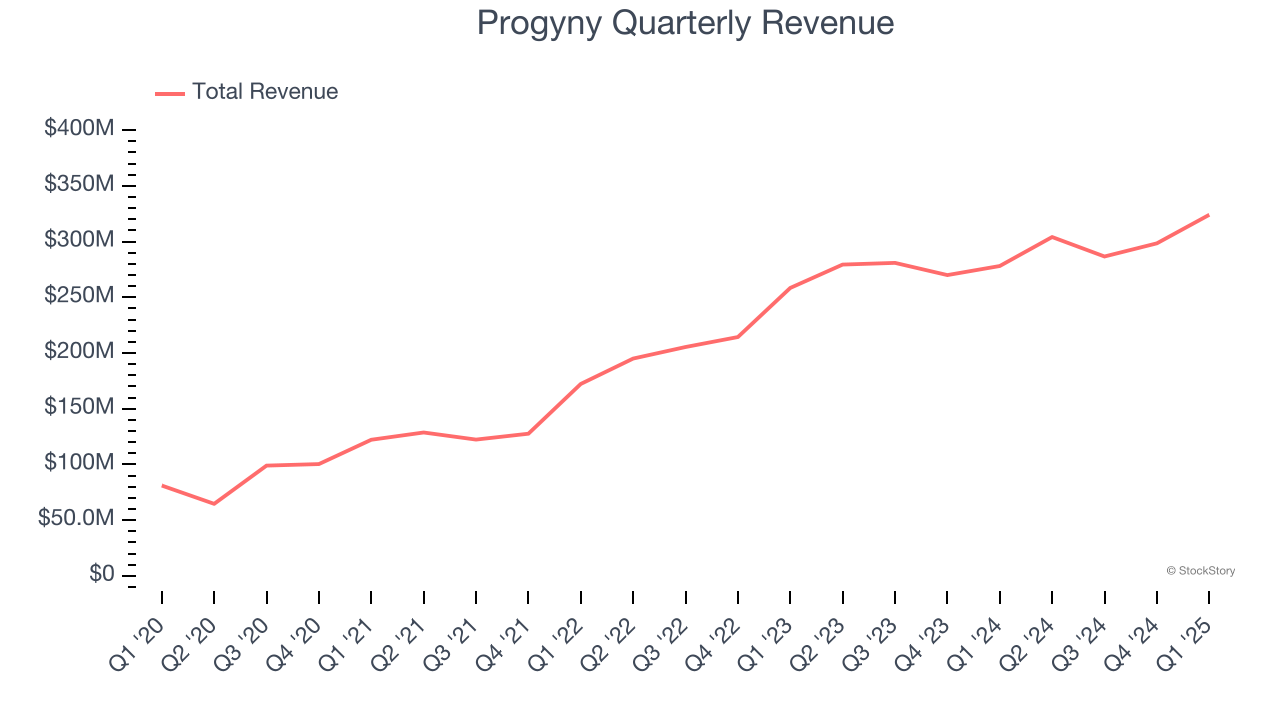
We at StockStory place the most emphasis on long-term growth, but within healthcare, a half-decade historical view may miss recent innovations or disruptive industry trends. Progyny’s annualized revenue growth of 17.9% over the last two years is below its five-year trend, but we still think the results suggest healthy demand. 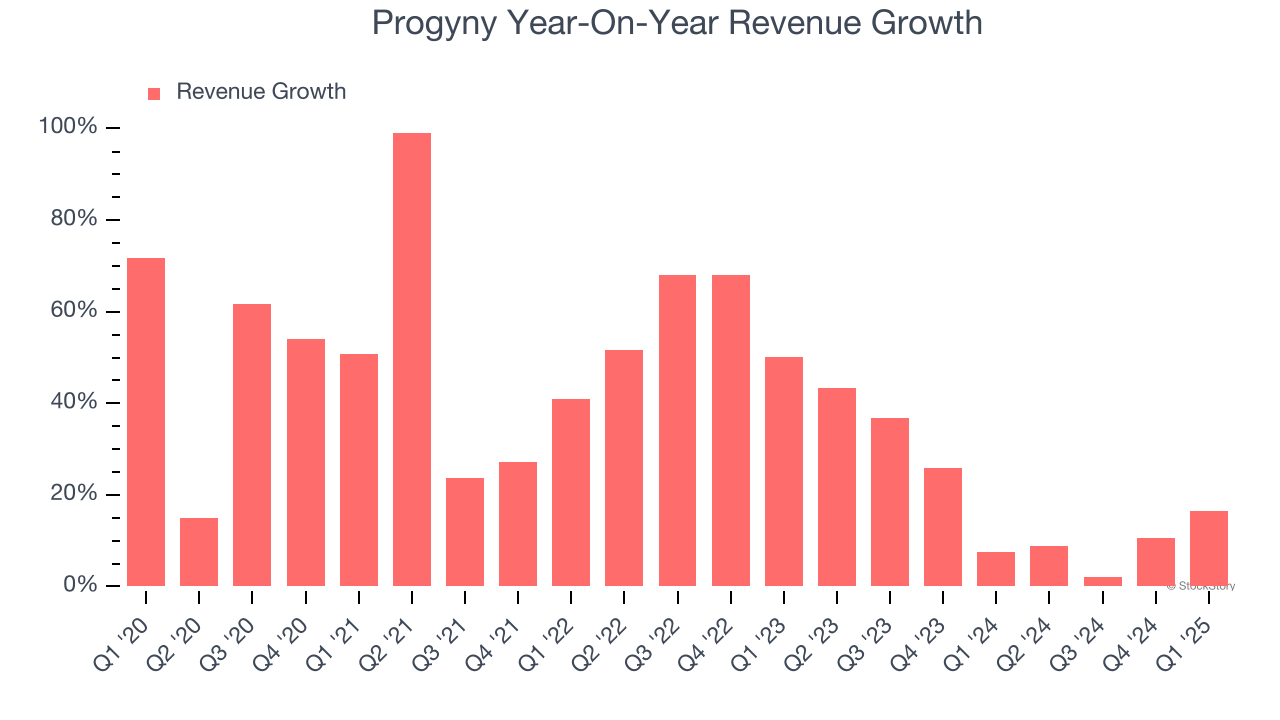
Progyny also reports its number of units sold, which reached 16,160 in the latest quarter. Over the last two years, Progyny’s units sold averaged 2.9% year-on-year growth. Because this number is lower than its revenue growth, we can see the company benefited from price increases. 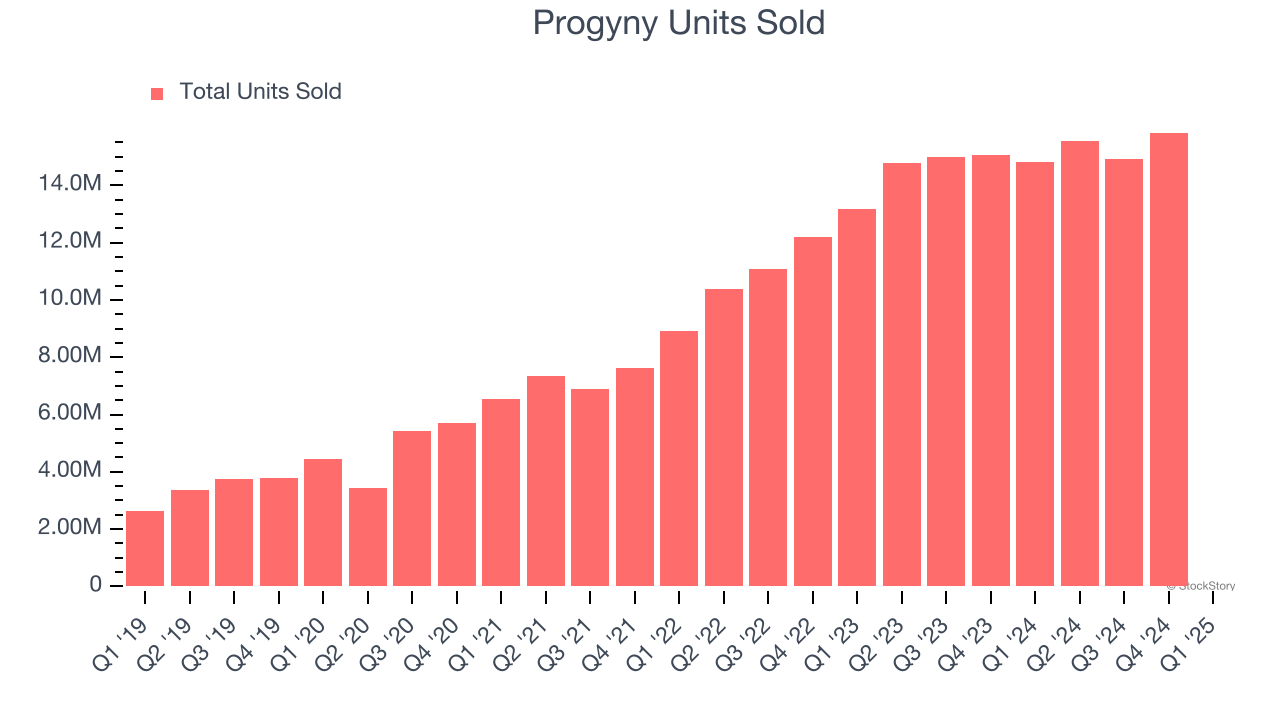
This quarter, Progyny reported year-on-year revenue growth of 16.5%, and its $324 million of revenue exceeded Wall Street’s estimates by 5%. Company management is currently guiding for a 4.4% year-on-year increase in sales next quarter.
Looking further ahead, sell-side analysts expect revenue to grow 1.5% over the next 12 months, a deceleration versus the last two years. This projection doesn't excite us and implies its products and services will face some demand challenges.
Unless you’ve been living under a rock, it should be obvious by now that generative AI is going to have a huge impact on how large corporations do business. While Nvidia and AMD are trading close to all-time highs, we prefer a lesser-known (but still profitable) stock benefiting from the rise of AI. Click here to access our free report one of our favorites growth stories.
Operating Margin
Progyny was profitable over the last five years but held back by its large cost base. Its average operating margin of 5.2% was weak for a healthcare business.
On the plus side, Progyny’s operating margin rose by 1.7 percentage points over the last five years, as its sales growth gave it operating leverage. The company’s two-year trajectory shows its performance was mostly driven by its recent improvements.
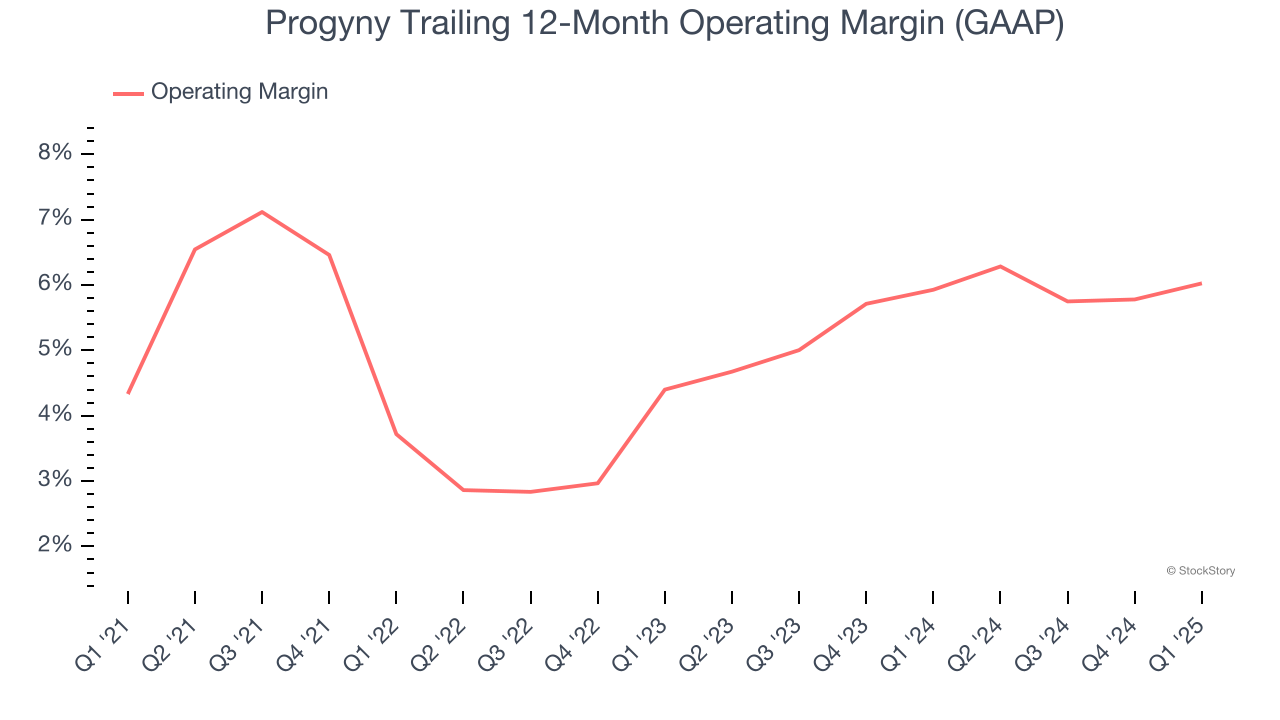
This quarter, Progyny generated an operating profit margin of 7.5%, in line with the same quarter last year. This indicates the company’s overall cost structure has been relatively stable.
Earnings Per Share
Revenue trends explain a company’s historical growth, but the long-term change in earnings per share (EPS) points to the profitability of that growth – for example, a company could inflate its sales through excessive spending on advertising and promotions.
Progyny’s EPS grew at an astounding 106% compounded annual growth rate over the last five years, higher than its 35.7% annualized revenue growth. This tells us the company became more profitable on a per-share basis as it expanded.
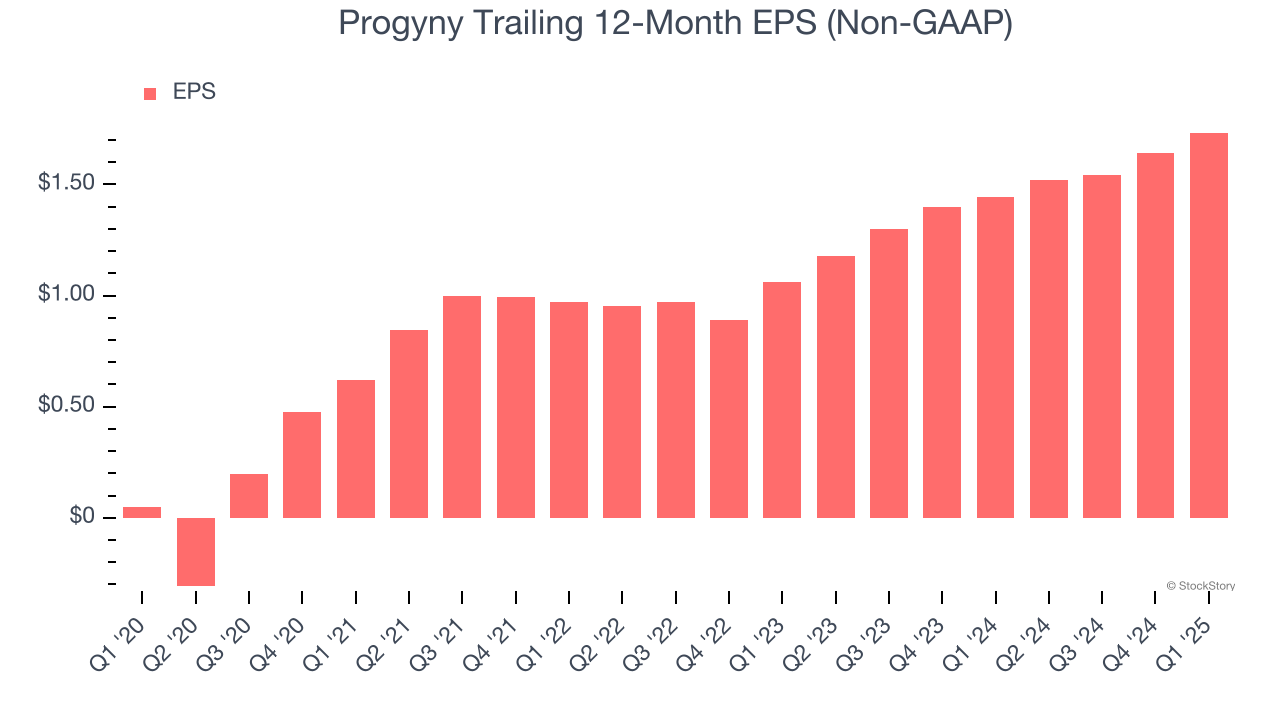
Diving into the nuances of Progyny’s earnings can give us a better understanding of its performance. As we mentioned earlier, Progyny’s operating margin was flat this quarter but expanded by 1.7 percentage points over the last five years. On top of that, its share count shrank by 10.4%. These are positive signs for shareholders because improving profitability and share buybacks turbocharge EPS growth relative to revenue growth. 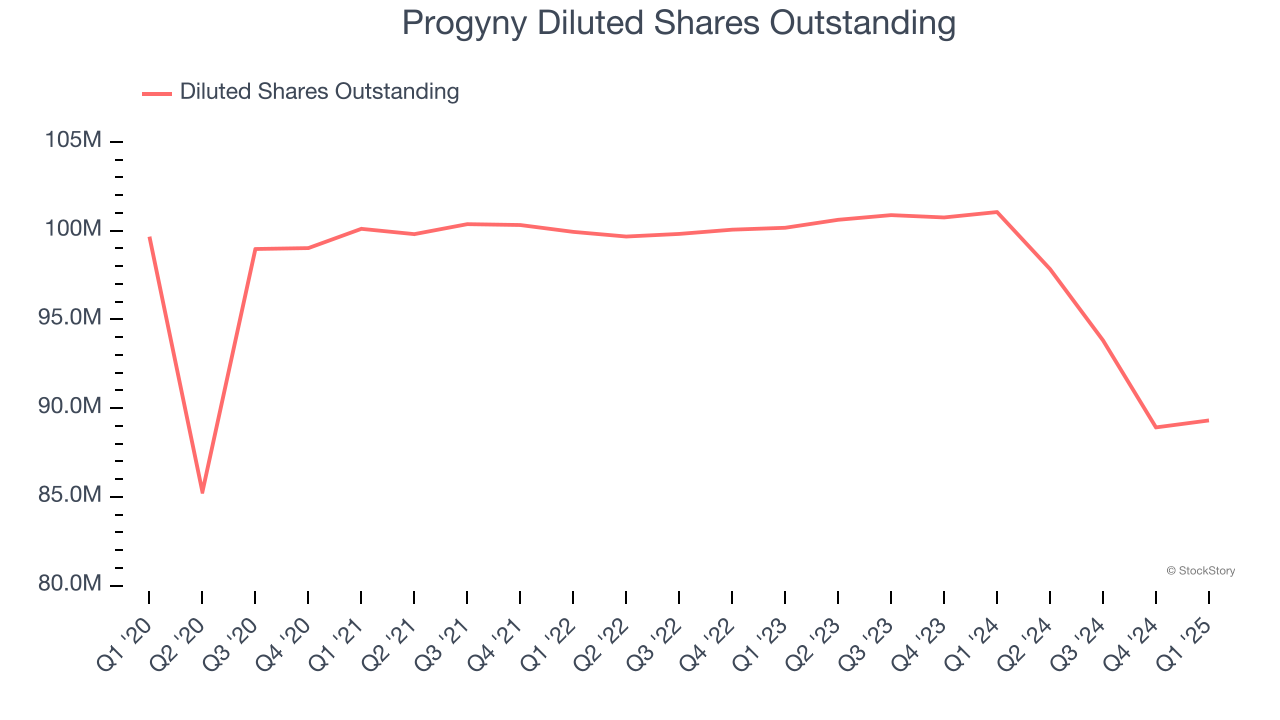
In Q1, Progyny reported EPS at $0.48, up from $0.39 in the same quarter last year. This print beat analysts’ estimates by 7.7%. Over the next 12 months, Wall Street expects Progyny’s full-year EPS of $1.73 to shrink by 5.2%.
Key Takeaways from Progyny’s Q1 Results
We enjoyed seeing Progyny beat analysts’ revenue expectations this quarter. We were also glad its revenue guidance for next quarter exceeded Wall Street’s estimates. On the other hand, its sales volume missed significantly and its EPS guidance for next quarter fell slightly short of Wall Street’s estimates. Overall, this was a weaker quarter. The stock traded up 5% to $24.53 immediately following the results.
So should you invest in Progyny right now? What happened in the latest quarter matters, but not as much as longer-term business quality and valuation, when deciding whether to invest in this stock. We cover that in our actionable full research report which you can read here, it’s free.





